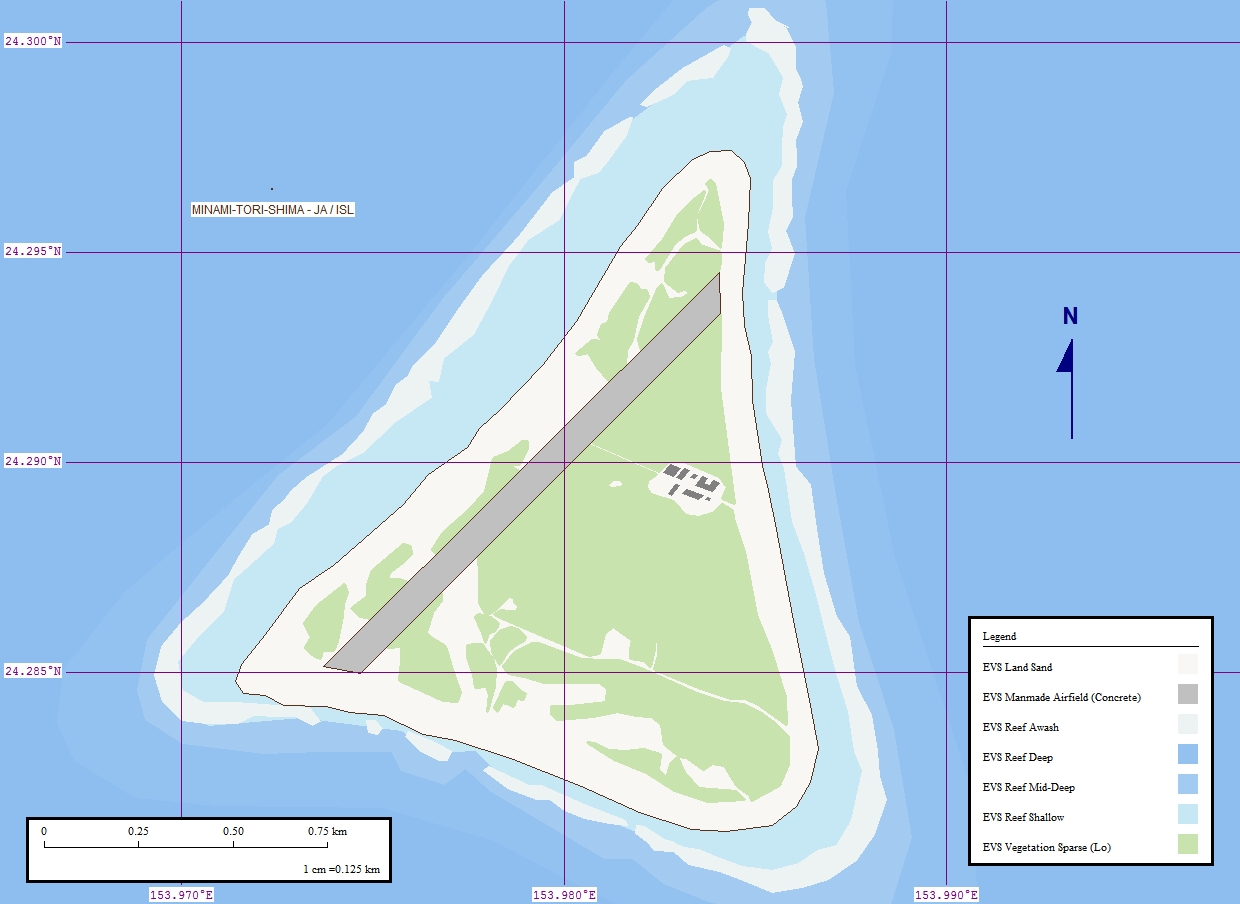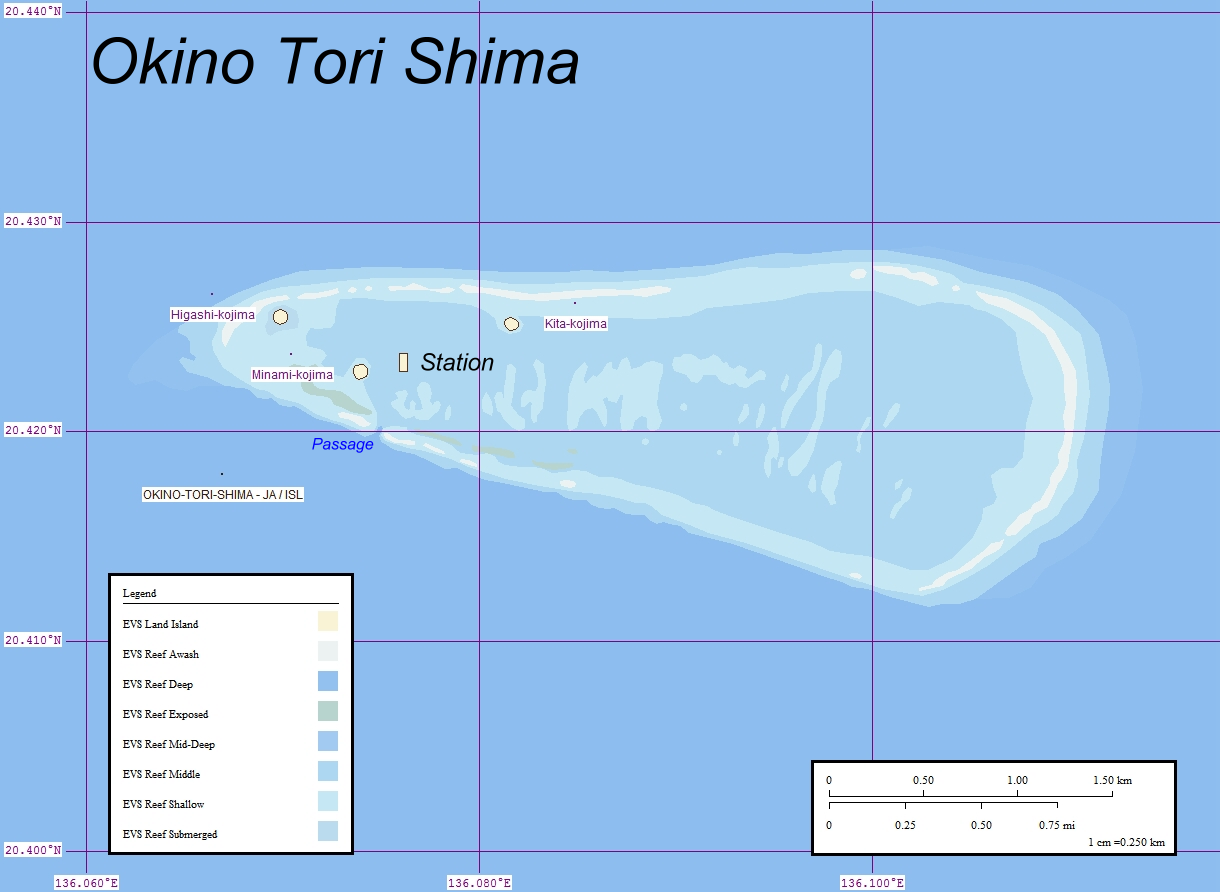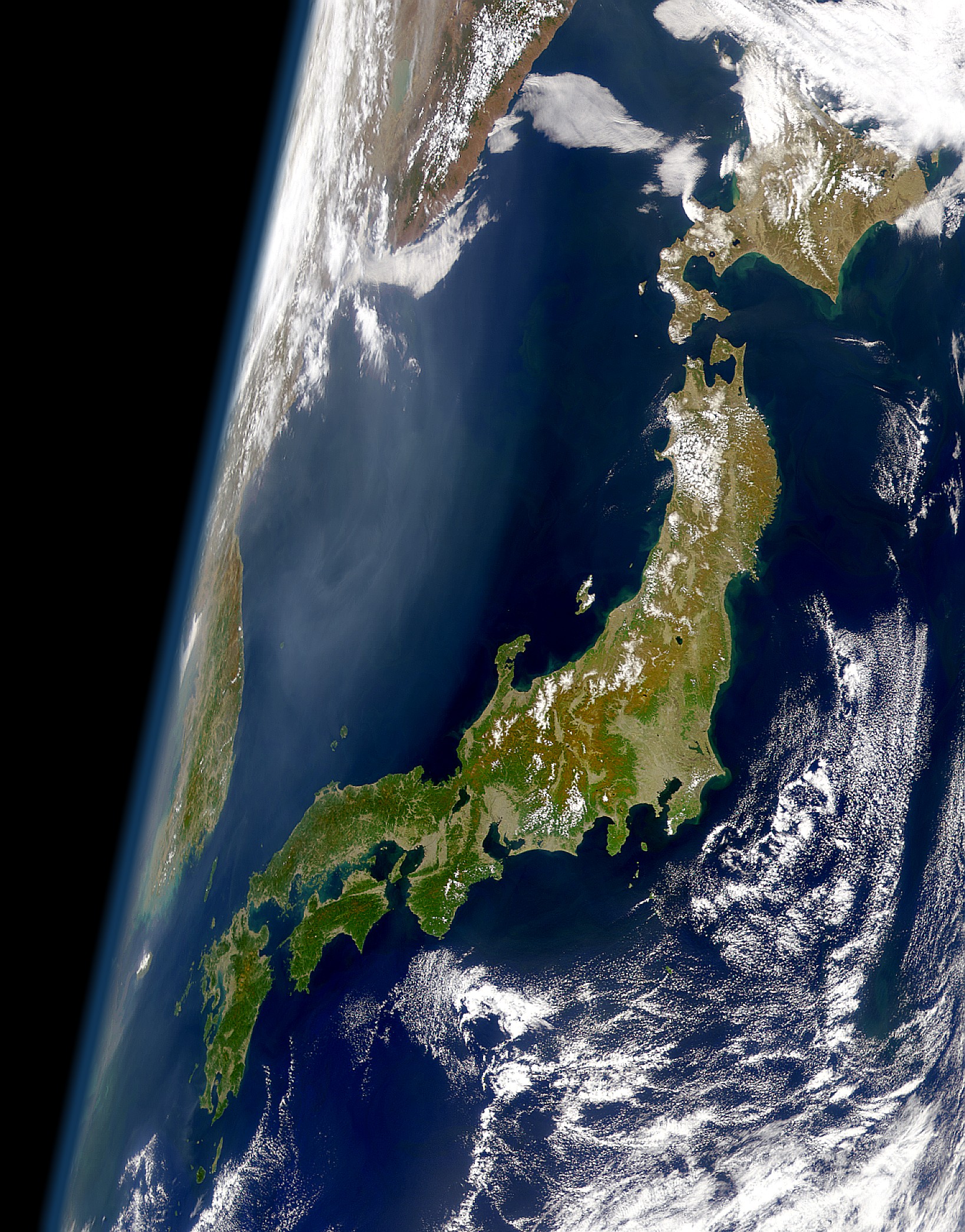|
Mainland Japan
is a term used to distinguish Japan's core land area from its outlying territories. "Mainland Japan" was an official term in the pre-war period, distinguishing Japan proper from its overseas territories (外地, ''gaichi'', lit. "outer lands") in the Far East, such as Japanese Taiwan, Japanese Korea, Karafuto, the South Seas Mandate, and the Kwantung Leased Territory. After the end of World War II, its usage became less common and lost its previous legal significance. The term's literal Japanese meaning might best be translated as "inner Japan" or "inner lands". The term " mainland" is somewhat inaccurate since it usually refers to all or part of a continental landmass, rather than islands. Today, the term is sometimes colloquially used to distinguish the country's four largest islands ( Hokkaidō, Honshū, Kyūshū, and Shikokū) from smaller islands such as the Bonin Islands and the Ryukyu Islands, although these islands were considered part of Mainland Japan in the p ... [...More Info...] [...Related Items...] OR: [Wikipedia] [Google] [Baidu] |
Japan
Japan is an island country in East Asia. Located in the Pacific Ocean off the northeast coast of the Asia, Asian mainland, it is bordered on the west by the Sea of Japan and extends from the Sea of Okhotsk in the north to the East China Sea in the south. The Japanese archipelago consists of four major islands—Hokkaido, Honshu, Shikoku, and Kyushu—and List of islands of Japan, thousands of smaller islands, covering . Japan has a population of over 123 million as of 2025, making it the List of countries and dependencies by population, eleventh-most populous country. The capital of Japan and List of cities in Japan, its largest city is Tokyo; the Greater Tokyo Area is the List of largest cities, largest metropolitan area in the world, with more than 37 million inhabitants as of 2024. Japan is divided into 47 Prefectures of Japan, administrative prefectures and List of regions of Japan, eight traditional regions. About three-quarters of Geography of Japan, the countr ... [...More Info...] [...Related Items...] OR: [Wikipedia] [Google] [Baidu] |
Bonin Islands
The Bonin Islands, also known as the , is a list of islands of Japan, Japanese archipelago of over 30 subtropical and Island#Tropical islands, tropical islands located around SSE of Tokyo and northwest of Guam. The group as a whole has a total area of but only two of the islands are permanently inhabited, Chichijima and Hahajima. Together, their population was 2,560 as of 2021. Administratively, Tokyo Metropolitan Government, Tokyo's Ogasawara Subprefecture also includes the settlements on the Volcano Islands and the Japan Maritime Self-Defense Force, Self-Defense Force post on Iwo Jima. The seat of government is Chichijima. Because of the Bonins' isolation, many of their animals and plants have undergone unique evolutionary processes. It has been called "the Galápagos Islands, Galápagos of the Orient" and was named a natural World Heritage Site in 2011. When first reached during the early modern period, the islands were entirely uninhabited. Subsequent research has found ev ... [...More Info...] [...Related Items...] OR: [Wikipedia] [Google] [Baidu] |
Minamitorishima
sometimes Minami-Tori-shima or Minami-Torishima, also known as Marcus Island, is an isolated Islands of Japan, Japanese coral atoll in the northwestern Pacific Ocean, located some southeast of Tokyo and east of the closest Japanese island, South Iwo Jima of the Volcano Islands, and nearly on a straight line between mainland Tokyo and Wake Island, further to the east-southeast. The closest island to Minamitorishima is Maug Islands, East Island in the Mariana Islands, which is to the west-southwest. It is the easternmost territory (country subdivision), territory belonging to Japan, and the only Japanese territory on the Pacific Plate, past the Japan Trench. Although small (), it is of strategic importance, as it enables Japan to claim a exclusive economic zone in the surrounding waters. It is also the easternmost territory of Tokyo, being administratively part of Ogasawara Subprefecture. No civilians live there, except personnel of the Japan Meteorological Agency, Japan Self- ... [...More Info...] [...Related Items...] OR: [Wikipedia] [Google] [Baidu] |
Okinotorishima
, or Parece Vela, is a coral reef, geologically an atoll, with two rocks enlarged with tetrapod-cement structures. It is administered by Japan with a total shoal area of and land area . Its dry land area is mostly made up by three concrete encasings and there is a stilt platform in the lagoon housing a research station. There is a third completely artificial tetrapod-cement islet. Okinotorishima is located on the Palau–Kyushu Ridge in the Philippine Sea, southeast of Okidaitōjima and west-southwest of South Iwo Jima in the Bonin Islands or south of Tokyo, Japan. Okinotorishima is the southernmost part of Japan and the only Japanese territory south of the Tropic of Cancer. Japan argues that Okinotorishima is significant enough for it to claim a exclusive economic zone (EEZ) around it, but China, South Korea, and Taiwan dispute the Japanese EEZ, saying that the atoll does not meet the definition of an island under the United Nations Convention on the Law of the Sea. ... [...More Info...] [...Related Items...] OR: [Wikipedia] [Google] [Baidu] |
Volcano Islands
The or are a group of three Japanese-governed islands in Micronesia. They lie south of the Ogasawara Islands and belong to the municipality of Ogasawara, Tokyo, Tokyo Metropolis, Japan. The islands are all active volcanoes lying atop the Izu–Bonin–Mariana Arc that stretches south to the Marianas. They have an area of , and a population of 380. The island of Iwo Jima in the Volcano Islands lies about southeast of Miyazaki. Geography The Volcano Islands are: *, , (Sakaki-ga-mine) *, , (Suribachi-yama) * , Farther north but in the same volcanic arc is: *, , There is a Japan Self-Defense Forces air base on Iwo Jima with a staff of 380. It is located in the village of Minami. Other than that, the islands are uninhabited. File:Kazan-retto.jpg, Satellite photo of the Volcano Islands (2004) * Fukutoku-Okanoba Generally submerged volcano eruptions sometimes bring it above the surface. History The first recorded sighting by Europeans was in October 1543 b ... [...More Info...] [...Related Items...] OR: [Wikipedia] [Google] [Baidu] |
Nanpō Islands
The is a collective term for the groups of islands that are located to the south of the Japanese archipelago. They extend from the Izu Peninsula west of Tokyo Bay southward for about , to within of the Mariana Islands. The Nanpō Islands are all administered by Tokyo Metropolis. The Hydrographic and Oceanographic Department of the Japan Coast Guard defines the Nanpō Shotō as follows:Ajiro Tatsuhiko and Warita Ikuo, ''Waga kuni no kōiki na chimei oyobi sono han'i ni tsuite no chōsa kenkyū'' (The geographical names and those extents of the wide areas in Japan), Kaiyō Jōhōbu Gihō, Vol. 27, 200online edition/ref> * Nanpō Shotō (Nanpō Islands) ** Izu Shotō (Izu Islands) ** Ogasawara Guntō (Bonin Islands) *** Mukojima Rettō *** Chichijima Rettō *** Hahajima Rettō ** Kazan Rettō ( Volcano Islands) *** Kita Iwo Jima ( North Iwo Jima) *** Iwo Jima *** Minami Iwo Jima ( South Iwo Jima) *** Nishinoshima ** Okinotorishima ** Minamitorishima The Geospatial Information ... [...More Info...] [...Related Items...] OR: [Wikipedia] [Google] [Baidu] |
Izu Islands
The are a group of volcanic islands stretching south and east from the Izu Peninsula of Honshū, Japan. Administratively, they form two towns and six villages; all part of Tokyo Prefecture. The largest is Izu Ōshima, usually called simply Ōshima. Although usually called the "Seven Islands of Izu" (:ja:伊豆七島, 伊豆七島 in Japanese), there are in fact more than a dozen islands and islets. Nine among them are currently inhabited. Geography The Izu islands stretch south-east from the Izu Peninsula on Honshu and cover an area of approximately . There are nine populated islands with a total population of 24,645 people () spread over . The largest of them is Izu Ōshima, Izu Oshima (8,346 inhabitants, ), the smallest To-shima, Tokyo, Toshima (292 inhabitants, .) Of the inhabited islands, seven are traditionally referred to as the "Izu Seven": Oshima, Toshima, Nii-jima, Niijima, Kōzu-shima, Kozushima, Miyake-jima, Miyakejima, Hachijō-jima, Hachijojima, and Mikura-jim ... [...More Info...] [...Related Items...] OR: [Wikipedia] [Google] [Baidu] |
Kyūshū
is the third-largest island of Japan's four main islands and the most southerly of the four largest islands (i.e. excluding Okinawa and the other Ryukyu (''Nansei'') Islands). In the past, it has been known as , and . The historical regional name referred to Kyushu and its surrounding islands. Kyushu has a land area of and a population of 14,311,224 in 2018. In ancient times, there is a theory that Kyushu was home to its own independent dynasty, where a unique, southern-influenced culture and tradition distinct from that of Honshu flourished. In the 8th-century Taihō Code reforms, Dazaifu was established as a special administrative term for the region. Geography The island is mountainous, and Japan's most active volcano, Mount Aso at , is on Kyūshū. There are many other signs of tectonic activity, including numerous areas of hot springs. The most famous of these are in Beppu, on the east shore, and around Mt. Aso in central Kyūshū. The island is separated f ... [...More Info...] [...Related Items...] OR: [Wikipedia] [Google] [Baidu] |
Honshū
, historically known as , is the largest of the four main islands of Japan. It lies between the Pacific Ocean (east) and the Sea of Japan (west). It is the seventh-largest island in the world, and the second-most populous after the Indonesian island of Java. Honshu had a population of 104 million , constituting 81.3% of the entire population of Japan, and mostly concentrated in the coastal areas and plains. Approximately 30% of the total population resides in the Greater Tokyo Area on the Kantō Plain. As the historical center of Japanese cultural and political power, the island includes several past Japanese capitals, including Kyōto, Nara, and Kamakura. Much of the island's southern shore forms part of the Taiheiyō Belt, a megalopolis that spans several of the Japanese islands. Honshu also contains Japan's highest mountain, Mount Fuji, and its largest lake, Lake Biwa. Most of Japan's industry is located in a belt running along Honshu's southern coast, from Tokyo to N ... [...More Info...] [...Related Items...] OR: [Wikipedia] [Google] [Baidu] |
Hokkaidō
is the second-largest island of Japan and comprises the largest and northernmost prefecture, making up its own region. The Tsugaru Strait separates Hokkaidō from Honshu; the two islands are connected by railway via the Seikan Tunnel. The largest city on Hokkaido is its capital, Sapporo, which is also its only ordinance-designated city. Sakhalin lies about to the north of Hokkaidō, and to the east and northeast are the Kuril Islands, which are administered by Russia, though the four most southerly are claimed by Japan. The position of the island on the northern end of the archipelago results in a colder climate, with the island seeing significant snowfall each winter. Despite the harsher climate, it serves as an agricultural breadbasket for many crops. Hokkaido was formerly known as '' Ezo'', ''Yezo'', ''Yeso'', or ''Yesso''. Nussbaum, Louis-Frédéric. (2005). "Hokkaidō" in Although Japanese settlers ruled the southern tip of the island since the 16th century, Hok ... [...More Info...] [...Related Items...] OR: [Wikipedia] [Google] [Baidu] |
Kuril Islands
The Kuril Islands or Kurile Islands are a volcanic archipelago administered as part of Sakhalin Oblast in the Russian Far East. The islands stretch approximately northeast from Hokkaido in Japan to Kamchatka Peninsula in Russia, separating the Sea of Okhotsk from the north Pacific Ocean. There are 56 islands and many minor islets. The Kuril Islands consist of the Greater Kuril Chain and, at the southwest end, the parallel Lesser Kuril Chain. The group termed the 'South Kurils' consists of those of the Lesser Kuril Chain together with Kunashir and Iturup in the Greater Kuril Chain. The Vries Strait between Iturup and Urup forms the Miyabe Line dividing the North and South Kurils. The Kuril Islands cover an area of around , with a population of roughly 20,000. The islands have been under Russian administration since their Invasion of the Kuril Islands, 1945 invasion by the Soviet Union near the end of World War II. Japan claims the four southernmost islands, including two of the ... [...More Info...] [...Related Items...] OR: [Wikipedia] [Google] [Baidu] |







